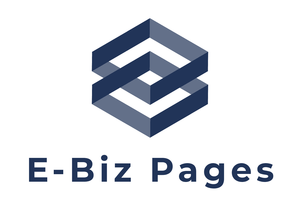Mastering On Page And Off Page SEO
Mastering On Page And Off Page SEO: Your Guide to Ranking Higher
Welcome to your comprehensive guide on mastering on-page and off-page SEO to rank higher in search engine results pages (SERPs). Factual data shows that mastering both on-page and off-page SEO is crucial for increasing organic traffic to your website. On-page SEO involves optimizing elements within your website, such as content, meta tags, and internal linking. Off-page SEO focuses on external factors that impact your site’s reputation and authority, including backlinks from reputable sources.
Key Takeaways:
- On-page and off-page SEO are important for ranking higher in SERPs and increasing organic traffic.
- On-page SEO provides greater control and focuses on optimizing website elements.
- Off-page SEO involves building a reputable backlink profile to enhance your site’s authority.
- Effective on-page SEO strategies include creating high-quality content, conducting keyword research, and optimizing title tags and meta descriptions.
- Monitoring and analyzing your on-page SEO efforts are essential for ongoing success.
Understanding On-Page SEO
In this section, we will explore the key aspects of on-page SEO and its impact on your website’s search engine rankings. On-page SEO involves optimizing various elements within your website to improve its visibility and relevance in search engine results pages (SERPs). By implementing effective on-page SEO strategies, you can increase organic traffic and attract more visitors to your site.
One of the fundamental aspects of on-page SEO is website optimization. This includes optimizing your website’s content, meta tags, and internal linking structure. When it comes to content optimization, it’s important to create high-quality and user-friendly content that is relevant to your target audience. By conducting thorough keyword research, you can discover the right target keywords to incorporate strategically into your content.
| Benefits of On-Page SEO | Best Practices |
|---|---|
|
|
Content Optimization
Content optimization plays a crucial role in on-page SEO. It involves creating well-structured, engaging, and informative content that aligns with the search intent of your target audience. By incorporating target keywords naturally into your content, you can improve its relevance to search engine algorithms. Additionally, optimizing meta tags, such as meta titles and descriptions, helps search engines understand the purpose and relevance of your web pages.
Remember that creating high-quality content is not just about incorporating keywords. It’s essential to offer valuable information that satisfies user needs and provides a positive user experience. When your content is relevant, informative, and easy to navigate, it increases the chances of attracting and engaging your target audience.
By implementing on-page SEO best practices, you can enhance your website’s visibility, attract more organic traffic, and improve your overall search engine rankings. In the next section, we will explore the power of off-page SEO and its importance in boosting your site’s reputation and authority.
The Power of Off-Page SEO
Discover the power of off-page SEO and its ability to enhance your website’s authority and visibility in search engine rankings. While on-page SEO focuses on optimizing elements within your website, off-page SEO concentrates on external factors that impact your site’s reputation and authority.
One of the key aspects of off-page SEO is link building. Building high-quality backlinks from reputable sources can significantly improve your site’s visibility and credibility. These backlinks act as votes of confidence from other websites, indicating to search engines that your site is trustworthy and deserving of higher rankings.
Developing an effective off-page SEO strategy involves various techniques such as guest blogging, social media marketing, influencer outreach, and online directory submissions. These methods can help you acquire relevant and authoritative backlinks, ultimately boosting your site’s visibility in search results.
Table 1: Off-Page SEO Techniques
| Technique | Description |
|---|---|
| Guest Blogging | Writing and publishing articles on other websites to gain backlinks and exposure. |
| Social Media Marketing | Promoting your website and content on social media platforms to attract and engage a wider audience. |
| Influencer Outreach | Collaborating with influential individuals in your industry to gain their support and endorsement, resulting in backlinks and increased brand visibility. |
| Online Directory Submissions | Submitting your website to relevant online directories to improve your site’s visibility and gain valuable backlinks. |
By implementing an effective off-page SEO strategy, you can enhance your website’s authority, improve its visibility in search engine rankings, and ultimately drive more organic traffic to your site.

Creating High-Quality Content
Learn how to create compelling, high-quality content that resonates with your audience and boosts your website’s SEO performance. When it comes to on-page SEO, content optimization is key. By creating valuable and user-friendly content, you not only attract and engage your target audience, but you also send positive signals to search engines.
To optimize your content for SEO, start by conducting thorough keyword research. Identify the keywords and phrases that are relevant to your industry and align with your target audience’s search intent. Incorporate these keywords strategically throughout your content, including in the headline, subheadings, and body text. However, be careful not to overuse them, as keyword stuffing can harm your SEO efforts.
Aside from keywords, focus on delivering high-quality information that addresses your audience’s needs and provides valuable insights. Create unique and original content that stands out from the competition. Use a mix of formats, such as blog posts, videos, infographics, and podcasts, to cater to different learning preferences. Remember to optimize any accompanying images by including alt text that describes the image using relevant keywords.
| Benefits of High-Quality Content: |
|---|
| • Improved search engine rankings |
| • Increased organic traffic |
| • Enhanced user engagement and time on site |
| • Higher chances of earning backlinks from reputable sources |
| • Establishing authority in your industry |
By investing time and effort into creating high-quality and user-friendly content, you can improve your website’s SEO performance and stand out in the competitive online landscape.
Next Steps:
- Perform keyword research to discover the most relevant and valuable keywords for your content.
- Create a content strategy that aligns with your target audience’s needs and preferences.
- Produce high-quality content consistently, focusing on providing value and addressing your audience’s pain points.
- Promote your content through various channels, such as social media, email marketing, and influencer outreach.
- Continuously measure and analyze the performance of your content to make data-driven improvements.
Conducting Effective Keyword Research
Unlock the secrets of effective keyword research and discover how it can propel your website to the top of search engine rankings. Keyword research plays a crucial role in optimizing your website for search engines and attracting organic traffic. By identifying the right target keywords, you can ensure that your content aligns with user intent and increases your chances of ranking higher in search engine results pages (SERPs).
To begin your keyword research journey, start by brainstorming relevant topics and themes related to your website’s niche. Consider the products, services, or information you provide and think about the words and phrases users would search for to find your website. These initial ideas will serve as a foundation for further exploration.
Keyword Research Tools
Next, leverage keyword research tools to expand your list of potential keywords and gather valuable insights. Tools like Google Keyword Planner, SEMrush, and Moz Keyword Explorer provide data on search volume, competition, and related keywords. This information helps you identify high-potential keywords that have a good balance of search volume and competition.
Once you have a list of keywords, prioritize them based on relevance, search volume, and competition. Consider incorporating a mix of long-tail keywords (specific, longer phrases) and broader keywords to capture different search intents and increase your chances of ranking for a variety of search queries.
| Keyword | Search Volume | Competition |
|---|---|---|
| target keywords | 2,000 | High |
| keyword research | 5,500 | Medium |
| search engine rankings | 1,200 | Low |
With your prioritized list of target keywords, you can now strategically incorporate them into your website’s content, meta tags, and headings. Remember, it’s important to create valuable, user-friendly content that naturally incorporates these keywords rather than forcing them unnaturally.
By mastering the art of keyword research, you can unlock the potential of your website and elevate its position in search engine rankings. Utilize effective keyword research tools, prioritize relevant keywords, and create user-focused content that aligns with these keywords. With consistent effort and optimization, you can increase your website’s visibility, attract targeted organic traffic, and achieve your ranking goals.
Optimizing Title Tags and Meta Descriptions
Learn how to optimize your title tags and meta descriptions to improve your website’s visibility and attract more organic traffic. Title tags and meta descriptions are crucial elements of on-page SEO that can significantly impact your website’s performance in search engine results pages (SERPs).
Title tags are HTML elements that define the title of a webpage. They appear as clickable headlines in SERPs and should accurately describe the content of your page. Meta descriptions, on the other hand, provide a brief summary of the page’s content and are displayed below the title tag in SERPs.
To optimize your title tags and meta descriptions, follow these best practices:
1. Create Unique and Compelling Title Tags
Each page on your website should have a unique title tag that accurately represents the content. Use relevant keywords strategically in the title to attract the attention of search engine users. Keep the title concise and compelling, aiming for 50-60 characters to ensure it is fully displayed in SERPs. Consider including your brand name to enhance recognition.
2. Craft Engaging Meta Descriptions
Write compelling meta descriptions that entice users to click on your website in search results. Aim for a length of around 150-160 characters to ensure full visibility. Include relevant keywords and highlight the unique value proposition of your page. Consider using action-oriented language or posing a question to engage potential visitors.
3. Use Rich Snippets
Enhance your search engine listings with rich snippets, which provide additional information and enhance the visibility of your pages. Rich snippets can display star ratings, product information, or event details, depending on the nature of your content. Implement structured data markup using schema.org to provide search engines with the necessary information to display rich snippets.
4. Test and Refine
Continuously test and refine your title tags and meta descriptions to optimize their performance. Monitor click-through rates (CTRs) and adjust your copy accordingly. Experiment with different language, length, and formatting to discover what resonates best with your target audience.
By optimizing your title tags and meta descriptions, you can improve your website’s visibility in search results and attract more organic traffic. Take the time to craft compelling and informative copy that entices users to click on your website, and regularly analyze and refine your strategy for ongoing success.
| Benefits of Optimized Title Tags and Meta Descriptions |
|---|
| Improved visibility in search engine results pages (SERPs) |
| Increase in organic traffic to your website |
| Higher click-through rates (CTRs) from search engine users |
| Better user engagement and reduced bounce rates |
| Enhanced brand recognition and credibility |
Improving Page Load Times
Discover the importance of optimizing your website’s page load times and how it can positively affect your SEO efforts. Page load times play a crucial role in user experience and search engine rankings. Slow-loading websites not only frustrate visitors but also tend to rank lower in search engine results. According to recent studies, more than half of users expect a website to load within 2 seconds, and they are likely to abandon a site if it takes longer than 3 seconds to load.
Optimizing your website’s page load times can significantly impact your SEO performance and user engagement. Faster loading times lead to higher user satisfaction and increased time spent on your website, reducing bounce rates. In addition, search engines like Google consider page speed as one of the ranking factors, giving faster-loading sites an advantage in organic search results.
To improve your website’s page load times, start by optimizing your images and other media files. Compressing images without compromising their quality can significantly reduce file sizes and improve loading speeds. Additionally, minifying HTML, CSS, and Javascript files by removing unnecessary spaces, characters, and comments can also help boost page load times. Implementing browser caching, which allows repeated visitors to load your site faster by storing certain elements locally, is another effective tactic.
The Importance of Mobile Optimization
In today’s mobile-driven world, optimizing your website for mobile devices is essential for improving page load times. Mobile users, especially those on slower networks, are particularly sensitive to slow-loading sites. To enhance mobile optimization, consider using responsive design, which automatically adjusts your site’s layout and content to fit different screen sizes. Minimizing the use of pop-ups, enabling AMP (Accelerated Mobile Pages) for your content, and employing mobile-specific caching techniques are also effective strategies.
| Technique | Description |
|---|---|
| Image Optimization | Compress and resize images to reduce file sizes. |
| Minification | Remove unnecessary characters, spaces, and comments from HTML, CSS, and Javascript files. |
| Browser Caching | Store certain elements locally to enable faster loading for returning visitors. |
| Responsive Design | Design your website to adapt to different screen sizes and devices. |
| AMP (Accelerated Mobile Pages) | Create simplified versions of your content for fast loading on mobile devices. |
Boosting Local SEO Rankings
Learn how to dominate local search results and attract local customers by implementing effective local SEO strategies. Local SEO rankings are crucial for businesses targeting specific geographic areas. By optimizing your website for local search, you can increase your visibility in search engine results pages (SERPs) and drive more organic traffic to your site.
One important aspect of local SEO is ensuring that your website is listed accurately on online directories and review platforms. This helps search engines understand your business’s location, and it also provides potential customers with essential information. Make sure that your business name, address, and phone number (NAP) are consistent across all directories and platforms.
Table: Top Local SEO Directories
| Directory | Domain Authority |
|---|---|
| Google My Business | 100 |
| 96 | |
| Yelp | 94 |
| Yellow Pages | 88 |
| Angie’s List | 86 |
Another effective local SEO strategy is to optimize your website’s content with location-specific keywords. Conduct keyword research to identify relevant keywords that include your target location. Incorporate these keywords naturally into your website’s content, meta tags, and headings to signal to search engines that your business is relevant to local searches.
Furthermore, acquiring backlinks from reputable local sources can significantly improve your local SEO rankings. Reach out to local businesses, organizations, and influencers in your area and request backlinks to your website. This not only enhances your site’s authority but also increases its visibility to local customers.
Implementing these local SEO strategies will help your business stand out in local search results and attract more local customers. By dominating local SEO rankings, you can drive targeted traffic to your website and increase your chances of converting visitors into customers.

Planning and Analysis for On-Page SEO
Gain insights into the crucial importance of planning and conducting a root cause analysis for successful on-page SEO implementation. Developing a comprehensive plan is essential to ensure that your on-page SEO strategies align with your goals and target audience. By creating a roadmap, you can effectively prioritize your efforts and optimize your website for better search engine rankings.
Begin by identifying your SEO objectives and determining the specific areas of improvement on your website. Conducting a root cause analysis will help you identify the underlying issues that may be hindering your SEO performance. This analysis involves examining various factors such as user experience, content quality, loading speed, and keyword optimization.
Once you have identified the areas that need improvement, you can begin formulating strategies to address them. Break down your plan into actionable steps, such as optimizing your website’s content, meta tags, and title tags. Develop a keyword research strategy to target relevant keywords that align with your audience’s search intent. Implementing schema markup, improving site navigation, and enhancing internal linking are also crucial aspects of on-page SEO that should be included in your plan.
Continual monitoring and analysis of your on-page SEO efforts are necessary to track their effectiveness and ensure ongoing success. Utilize analytics tools to measure your website’s performance, including page views, bounce rate, and organic traffic. Analyze the data regularly to identify patterns and trends, allowing you to make data-driven adjustments to your optimization strategies. By closely monitoring and analyzing your on-page SEO efforts, you can stay ahead of the competition and improve your website’s rankings in search engine results.
Table: On-Page SEO Checklist
| Optimization Area | Actions |
|---|---|
| Content | Create high-quality, relevant, and user-friendly content |
| Meta Tags | Optimize title tags and meta descriptions with targeted keywords |
| Keyword Research | Conduct thorough keyword research and incorporate targeted keywords strategically |
| Internal Linking | Improve site navigation and implement internal linking to enhance user experience and search engine visibility |
| Loading Speed | Optimize page load times for better user experience and improved rankings |
By following a well-defined plan and conducting a thorough analysis of your website, you can effectively implement on-page SEO strategies and improve your website’s visibility in search engine results. Remember to keep monitoring and analyzing your efforts to continuously optimize your website for better rankings and attract more organic traffic.
Monitoring and Analyzing On-Page SEO Efforts
Discover the essential steps to monitor and analyze your on-page SEO efforts to continuously improve and maintain your website’s search engine rankings. Monitoring and analyzing your on-page SEO strategies is crucial to ensure that they are effective and align with the ever-changing algorithms of search engines.
One of the key ways to monitor your on-page SEO is by regularly checking your website’s performance metrics. This includes tracking your website’s organic traffic, bounce rate, average session duration, and conversion rates. By analyzing these metrics, you can identify areas of improvement and make data-driven decisions to optimize your website further.
In addition to performance metrics, it is essential to monitor your keyword rankings. By tracking the rank of your target keywords in search engine results, you can assess the effectiveness of your on-page SEO efforts. Tools like Google Analytics and SEMrush can provide valuable insights into your keyword rankings and help you identify keywords that need optimization.
Another aspect to monitor for on-page SEO is the user experience (UX) of your website. This can be evaluated through factors like page load times, mobile responsiveness, and navigation structure. Slow loading pages and poor mobile optimization can negatively impact your SEO performance, so it is crucial to regularly assess and improve these elements.
By continually monitoring and analyzing your on-page SEO efforts, you can make informed decisions and implement necessary changes to improve your website’s search engine rankings. Remember to regularly review your performance metrics, track keyword rankings, and assess the user experience. With a well-rounded monitoring and analysis process in place, you can optimize your on-page SEO strategies and stay ahead of the competition.
| Steps for Monitoring On-Page SEO |
|---|
| 1. Track performance metrics such as organic traffic, bounce rate, and conversion rates. |
| 2. Monitor keyword rankings to assess the effectiveness of your SEO efforts. |
| 3. Evaluate the user experience through factors like page load times and mobile responsiveness. |
| 4. Make data-driven decisions and implement necessary changes to improve your website’s rankings. |
Conclusion
In conclusion, mastering on-page and off-page SEO is crucial for boosting your website’s ranking and driving organic traffic. Factual data shows that implementing effective strategies for both on-page and off-page SEO can significantly improve your site’s visibility in search engine results pages (SERPs) and increase your chances of attracting more visitors.
On-page SEO involves optimizing various elements within your website, such as content, meta tags, and internal linking. Creating high-quality and user-friendly content, conducting thorough keyword research, and strategically placing target keywords can greatly enhance your site’s visibility and relevance to search engines.
Additionally, optimizing title tags and meta descriptions can make your website more appealing and enticing to users, increasing the likelihood of them clicking through to your site. Improving page load times is also crucial for enhancing user experience and reducing bounce rates, which can positively impact your search engine rankings.
Off-page SEO focuses on external factors that contribute to your site’s authority and reputation. Acquiring high-quality backlinks from reputable sources and implementing effective link building strategies are essential for proving to search engines that your website is trustworthy and valuable to users.
By developing a comprehensive plan, conducting a root cause analysis, and continually monitoring and analyzing your on-page SEO efforts, you can make data-driven adjustments and ensure ongoing success in improving your website’s ranking and driving organic traffic. Remember, mastering both on-page and off-page SEO is a continuous process that requires dedication and adaptability to stay ahead of the competition and achieve long-term success.
FAQ
Why is mastering on-page and off-page SEO important for ranking higher?
Mastering on-page and off-page SEO is crucial for ranking higher in search engine results pages (SERPs) and increasing organic traffic to your website. On-page SEO involves optimizing elements within your website, such as content, meta tags, and internal linking. Off-page SEO focuses on external factors that impact your site’s reputation and authority, including backlinks from reputable sources.
What is the difference between on-page and off-page SEO?
On-page SEO involves optimizing elements within your website, such as content, meta tags, and internal linking. Off-page SEO focuses on external factors that impact your site’s reputation and authority, including acquiring backlinks from reputable sources.
Which is more significant, on-page or off-page SEO?
Both on-page and off-page SEO are important, but on-page SEO provides greater control and is considered more significant. On-page SEO involves optimizing elements within your website, allowing you to have direct influence over its performance in search engine results.
What are some effective strategies for on-page SEO?
Effective strategies for on-page SEO include creating high-quality and user-friendly content, conducting keyword research, strategically placing target keywords, optimizing title tags and meta descriptions, improving page load times, and boosting local SEO rankings.
How do I optimize title tags and meta descriptions?
Optimizing title tags and meta descriptions is crucial for on-page SEO. Tips for optimization include crafting compelling titles and descriptions that entice users to click on your website in search results, utilizing target keywords, and maintaining an accurate reflection of your content.
Why is it important to monitor and analyze on-page SEO efforts?
Continual monitoring and analysis of your on-page SEO efforts are necessary to track their effectiveness and ensure ongoing success. This allows you to identify areas for improvement, make data-driven decisions, and adjust your strategies accordingly.






